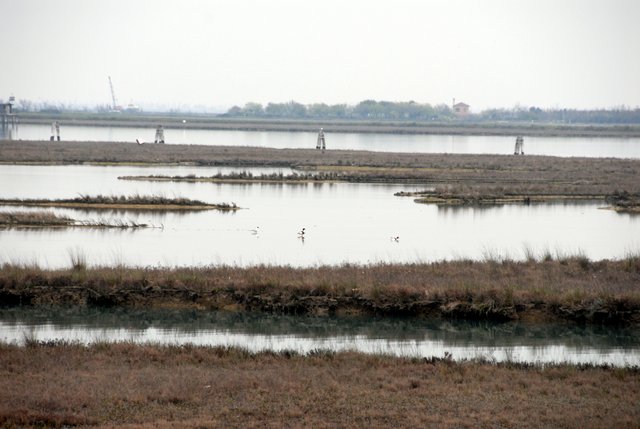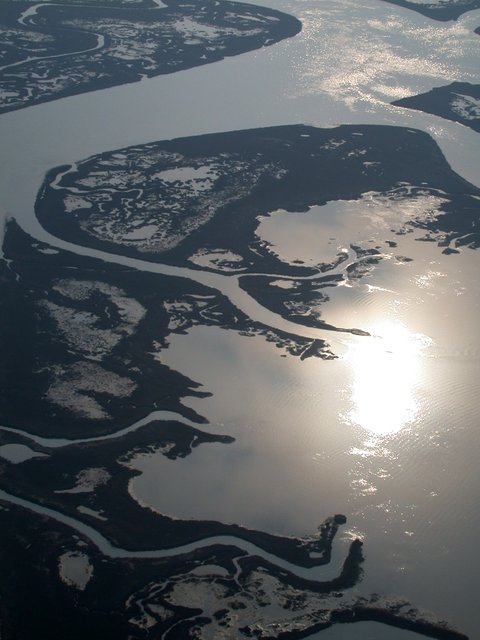Difference between revisions of "Coastal lagoon"
m |
|||
| Line 8: | Line 8: | ||
Coastal lagoons can be classified in different ways, according to their: | Coastal lagoons can be classified in different ways, according to their: | ||
| − | a) mean salinity ( freshwater, oligo- meso-, poly-, eu-haline, hypersaline) | + | |
| − | b) tidal regime ( non-, micro- meso- macro- tidal) | + | * a) mean salinity ( freshwater, oligo- meso-, poly-, eu-haline, hypersaline) |
| − | c) geomorphic type, i.e. related to the water exchange with the sea (chocked, restricted and leaky) | + | * b) tidal regime ( non-, micro- meso- macro- tidal) |
| + | * c) geomorphic type, i.e. related to the water exchange with the sea (chocked, restricted and leaky) | ||
They are also considered “transitional water systems”, term that was introduced by the European Union (European Water Framework Directive 2000/60/EC) to include all types of waters which were neither freshwater nor marine but are brackish or hyperhaline, including rias, fjords, fjards, estuaries and lagoons (Basset and Carrada, 2007; McLusky and Elliott, 2007; Elliott and Whitfield, 2011). | They are also considered “transitional water systems”, term that was introduced by the European Union (European Water Framework Directive 2000/60/EC) to include all types of waters which were neither freshwater nor marine but are brackish or hyperhaline, including rias, fjords, fjards, estuaries and lagoons (Basset and Carrada, 2007; McLusky and Elliott, 2007; Elliott and Whitfield, 2011). | ||
Revision as of 20:49, 6 September 2012
Coastal lagoons are transitional zones between land and sea: they are shallow inland water bodies, separated from the ocean by a barrier, connected to the ocean by one or more restricted inlets which remain open at least intermittently (Kjerfve 1994).

Once formed, lagoons are modified by erosion and deposition. Some of the coastal lagoons known in historical times have been infilled by accumulation of inwashed sediments and organic deposits (e.g. in the Anzio district, and along the Adriatic coastline, in Italy). Elsewhere, the marine erosion of the seaward barrier reduced former lagoons to marine bays. Coastal lagoons have a transitory “natural” character, being subjected to rapid geomorphologic evolution. The main drivers of this evolution are the rates of sediment supply and the relative sea-level rise. The actual sea-level depends on the combined effect of eustatism (rising of the mean sea level) and subsidence (lowering of the basin bottom).
Coastal lagoons present a great variety of dimensions, from 10.000 m2 to 1.0000 km2 (Lagoa dos Patos, Brazil). The largest in the Mediterranean Sea is the Lagoon of Venice (600 km2), while in the Baltic Sea the largets is the Curonian lagoon is 1.600 km2 . They show a wide range of ecological variation, too.
Coastal lagoons can be classified in different ways, according to their:
- a) mean salinity ( freshwater, oligo- meso-, poly-, eu-haline, hypersaline)
- b) tidal regime ( non-, micro- meso- macro- tidal)
- c) geomorphic type, i.e. related to the water exchange with the sea (chocked, restricted and leaky)
They are also considered “transitional water systems”, term that was introduced by the European Union (European Water Framework Directive 2000/60/EC) to include all types of waters which were neither freshwater nor marine but are brackish or hyperhaline, including rias, fjords, fjards, estuaries and lagoons (Basset and Carrada, 2007; McLusky and Elliott, 2007; Elliott and Whitfield, 2011).

Euro-Mediterranean lagoons have been managed since recorded times enhancing their natural heritage while delivering economic and societal benefits, until the equilibrium was broken by increasingly strong anthropogenic pressures, social and cultural changes.
In fact, lagoons are treasured ecosystems, being amongst the most productive and valuable environments in the Biosphere, and providing to the present society not only valuable ecosystem services, but also presenting very often an high cultural heritage value.
Due to their transitional nature, coastal lagoons are considered naturally stressed systems that experience frequent environmental disturbances and fluctuations (Barnes, 1980; UNESCO, 1980, 1981; Kjerfve, 1994; Gamito et al., 2005). Lagoons are now dramatically affected by habitat loss and modification, physical alteration, organic, chemical and biological pollution and overexploitation (as exogenic unmanaged pressures and endogenic managed pressures, sensu Borja et al 2010, Marine Pollution Bulletin). Pathways of vulnerability of lagoon ecosystems to anthropogenic drivers such as urbanisation and industrialisation are qualitatively well defined, even if the underlying mechanisms and the quantitative relationships are still unclear. Moreover, as ecotone ecosystems which are open and connected with both freshwater and marine ones, lagoons are among the most exposed aquatic ecosystems to current and foreseen climate changes.
Coastal lagoons can be considered also as as “Sentinel Systems” for climate change , i.e. one that responds to particular stressor(s) with changes across geographic gradients ,in ecosystem function (NOAA, 2009)
Climate change will have several effects on lagoon ecosystems, including changes in water temperature, freshwater inputs and their temporal patterns, and seawater inputs (Eisenreich 2005, Climate Change and the European Water Dimension). Low water discharges, in Southern Europe, and flash-flooding events, in North-Eastern Europe, are expected to increase changes in species distribution and abundance, biodiversity and ecosystem functioning and process rates are expected in transitional and lagoon ecosystems as the main outcomes of the adaptation to climate changes of critical environmental niche dimensions, such as temperature, dissolved oxygen, salinity, element concentrations, hydrology.
Being more confined than other transitional waters, lagoons are particularly sensitive to these changing pressures, mainly in the most reactive transitional zones, which are located at interfaces, e.g. terrestrial-aquatic, freshwater-marine, sediment-water column, lagoon waters - atmosphere (Ewel et al, 2002, Ecosystems, 4).